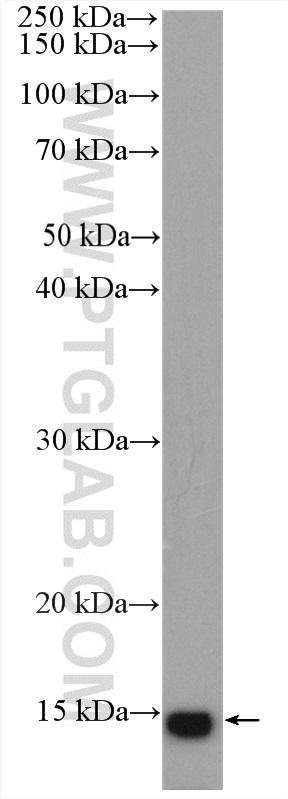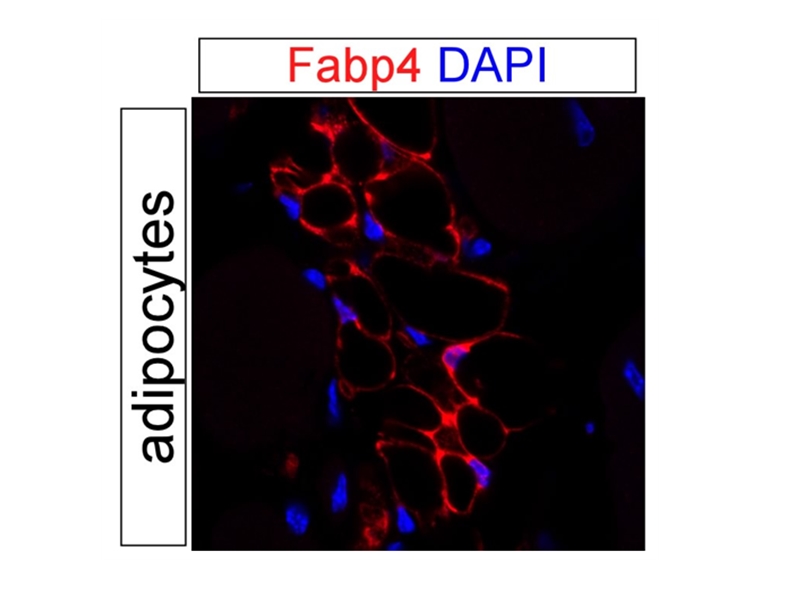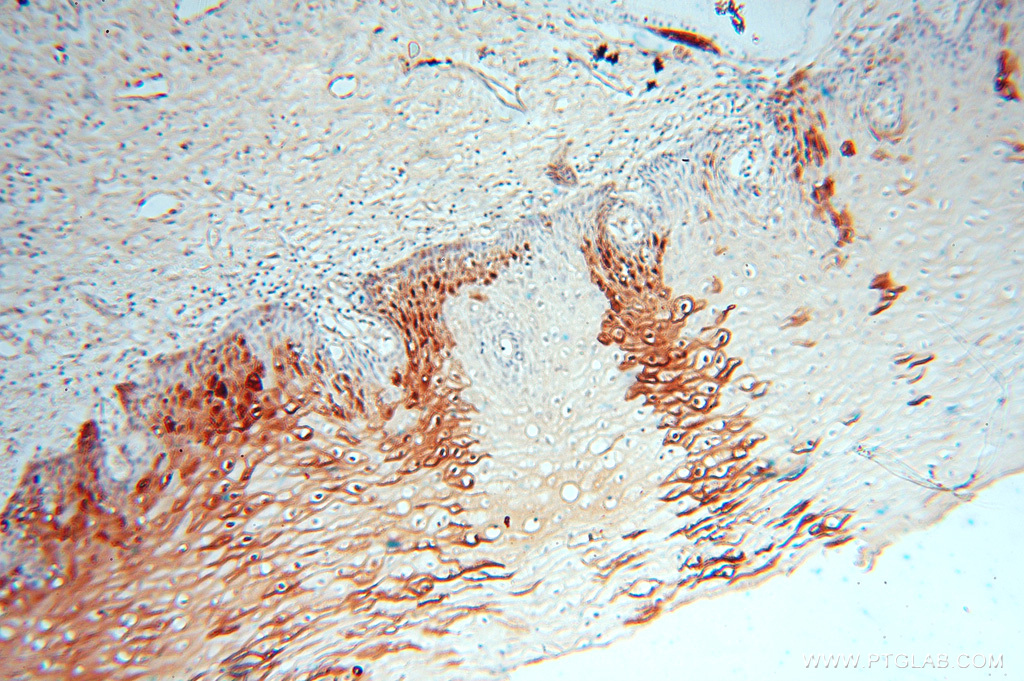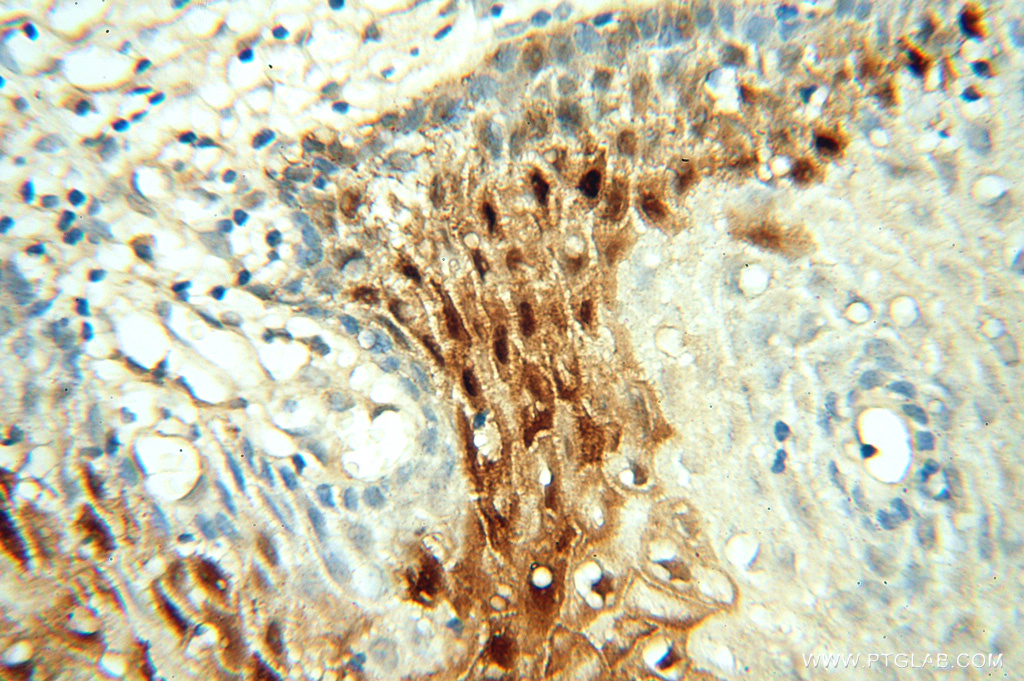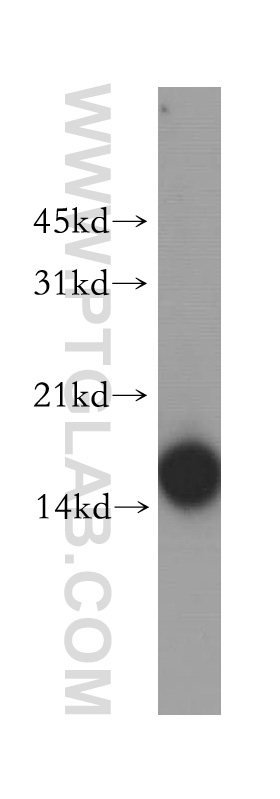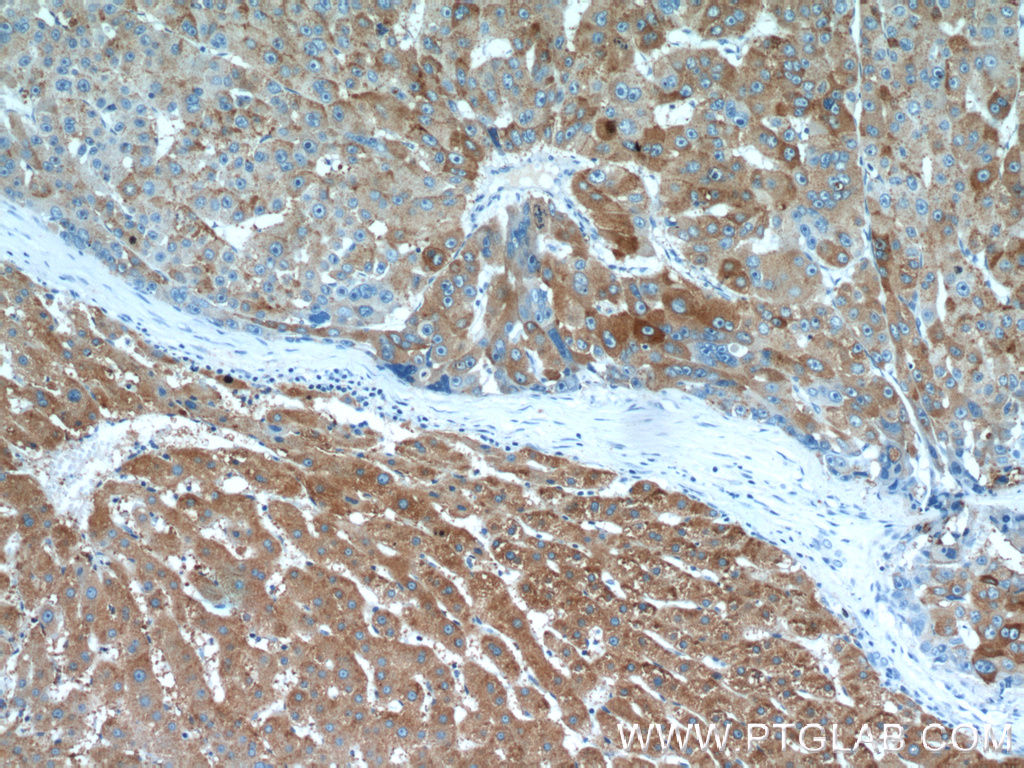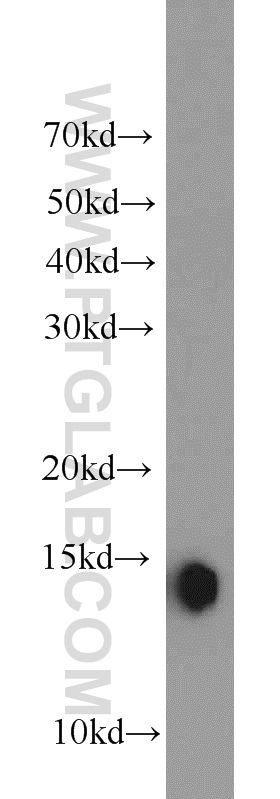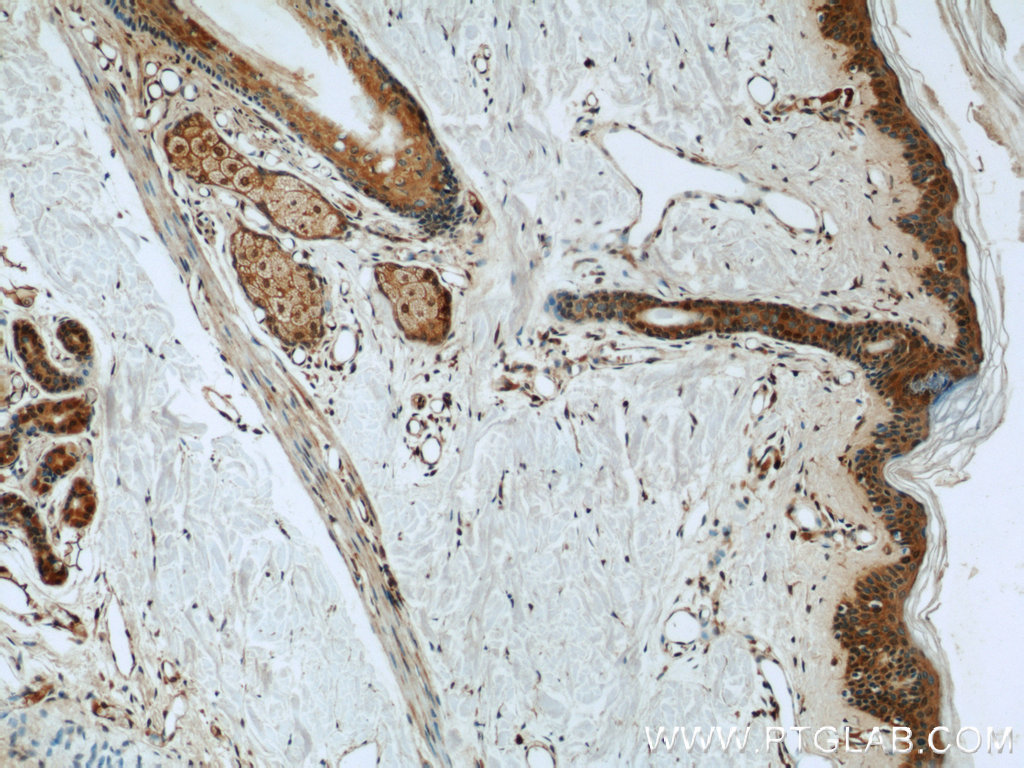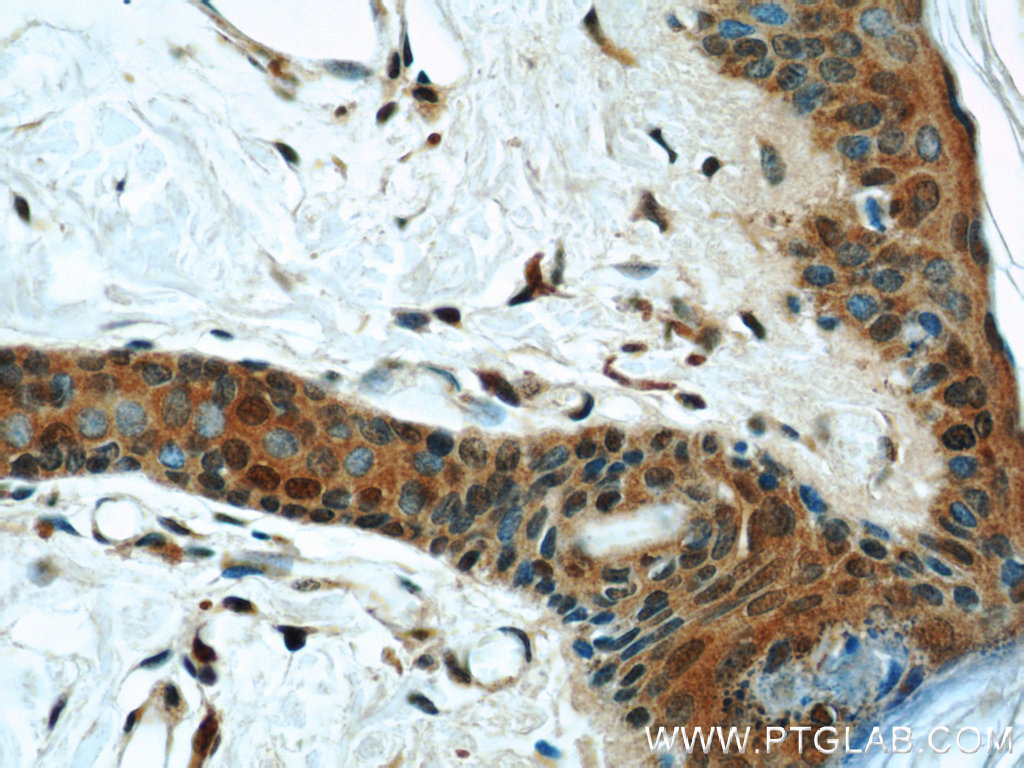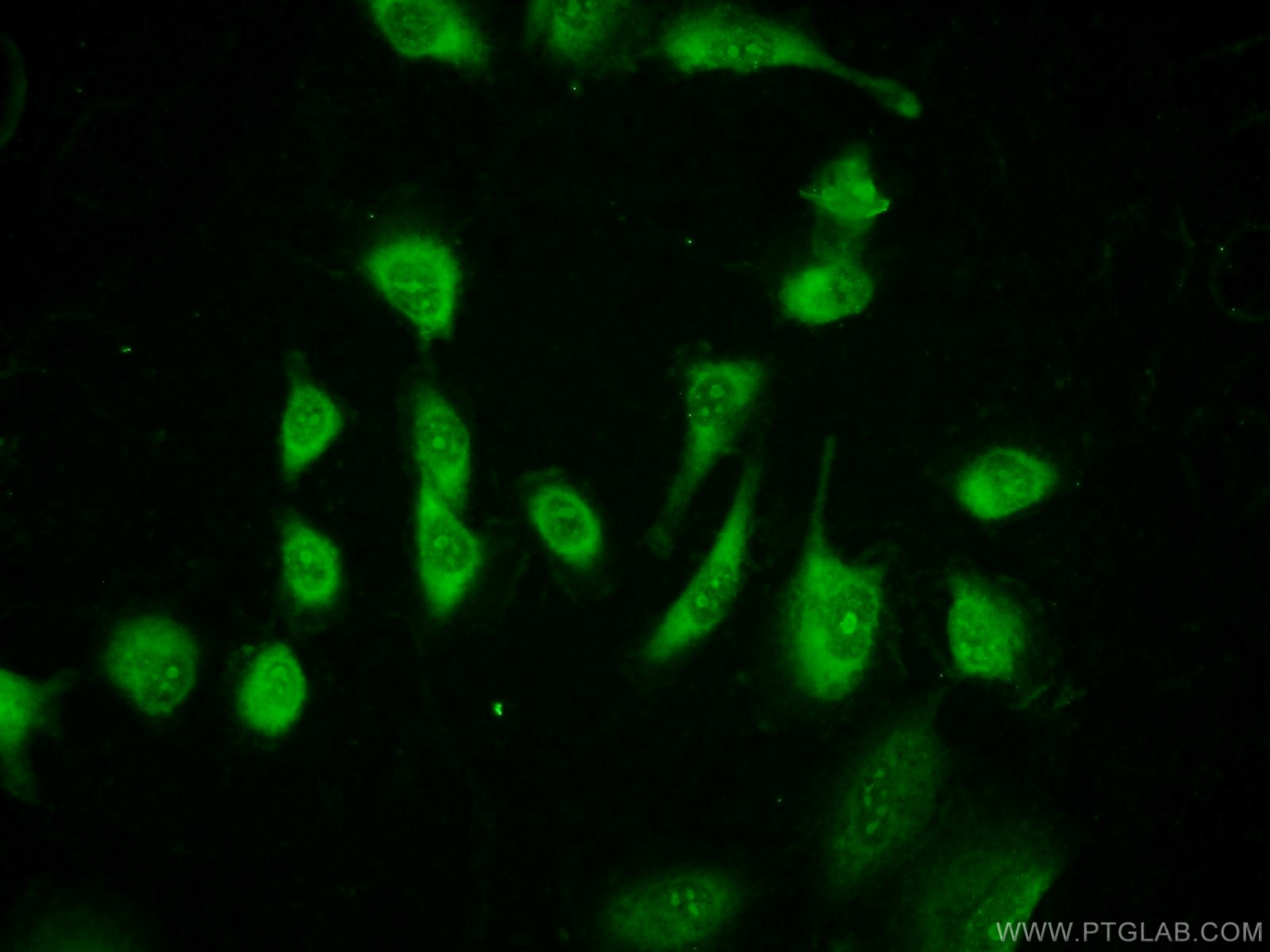FABP4 Polyclonal antibody
FABP4 Polyclonal Antibody for IF/ICC, IHC, WB,ELISA
Host / Isotype
Rabbit / IgG
Reactivity
human, mouse, rat
Applications
IF/ICC, IHC, WB,ELISA
Conjugate
Unconjugated
验证数据展示
经过测试的应用
| Positive WB detected in | rat skeletal muscle tissue, mouse skeletal muscle tissue |
| Positive IHC detected in | human cervix tissue, human skin tissue Note: suggested antigen retrieval with TE buffer pH 9.0; (*) Alternatively, antigen retrieval may be performed with citrate buffer pH 6.0 |
| Positive IF detected in | mouse adipose, HUVEC cells |
推荐稀释比
| Application | Dilution |
|---|---|
| Western Blot (WB) | WB : 1:500-1:1000 |
| Immunohistochemistry (IHC) | IHC : 1:20-1:200 |
| Immunofluorescence (IF) | IF : 1:20-1:200 |
| It is recommended that this reagent should be titrated in each testing system to obtain optimal results. | |
| Sample-dependent, Check data in validation data gallery. | |
产品信息
15872-1-AP targets FABP4 in WB, IHC, IF, ELISA applications and shows reactivity with human, mouse, rat samples.
| Tested Applications | IF/ICC, IHC, WB,ELISA |
| Cited Applications | IF, IHC, WB |
| Tested Reactivity | human, mouse, rat |
| Cited Reactivity | human, mouse, rat |
| Immunogen | FABP4 fusion protein Ag8631 种属同源性预测 |
| Host / Isotype | Rabbit / IgG |
| Class | Polyclonal |
| Type | Antibody |
| Full Name | fatty acid binding protein 4, adipocyte |
| Synonyms | A FABP, AFABP, ALBP, aP2, FABP4, Fatty acid binding protein 4 |
| Calculated Molecular Weight | 132 aa, 15 kDa |
| Observed Molecular Weight | 15 kDa |
| GenBank Accession Number | BC003672 |
| Gene Symbol | FABP4 |
| Gene ID (NCBI) | 2167 |
| RRID | AB_2102440 |
| Conjugate | Unconjugated |
| Form | Liquid |
| Purification Method | Antigen affinity purification |
| UNIPROT ID | P15090 |
| Storage Buffer | PBS with 0.02% sodium azide and 50% glycerol pH 7.3. |
| Storage Conditions | Store at -20°C. Stable for one year after shipment. Aliquoting is unnecessary for -20oC storage. |
背景介绍
实验方案
| Product Specific Protocols | |
|---|---|
| WB protocol for FABP4 antibody 15872-1-AP | Download protocol |
| IHC protocol for FABP4 antibody 15872-1-AP | Download protocol |
| IF protocol for FABP4 antibody 15872-1-AP | Download protocol |
| Standard Protocols | |
|---|---|
| Click here to view our Standard Protocols |
发表文章
| Species | Application | Title |
|---|---|---|
Eur Heart J Adipocyte fatty acid binding protein in atherosclerotic plaques is associated with local vulnerability and is predictive for the occurrence of adverse cardiovascular events. | ||
Autophagy Autophagy loss impedes cancer-associated fibroblast activation via downregulating proline biosynthesis. | ||
PLoS Biol Single-cell mapping reveals new markers and functions of lymphatic endothelial cells in lymph nodes. | ||
Int J Obes (Lond) miR-20a regulates adipocyte differentiation by targeting lysine-specific demethylase 6b and transforming growth factor-β signaling. | ||
Am J Physiol Cell Physiol Human Adipocytes from the Subcutaneous Superficial Layer have Greater Adipogenic Potential and Lower PPAR-γ DNA Methylation Levels than Deep Layer Adipocytes. |
